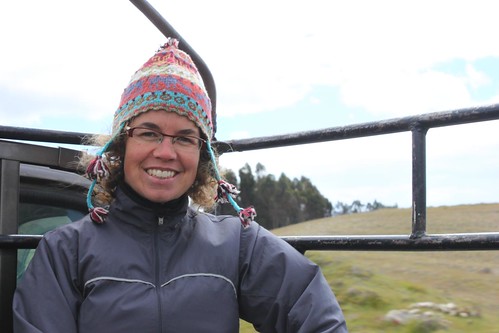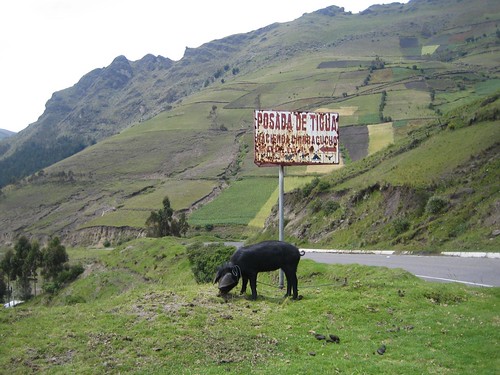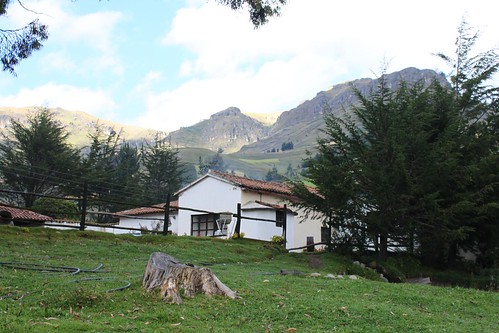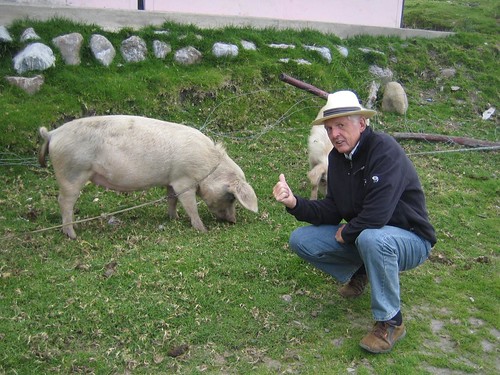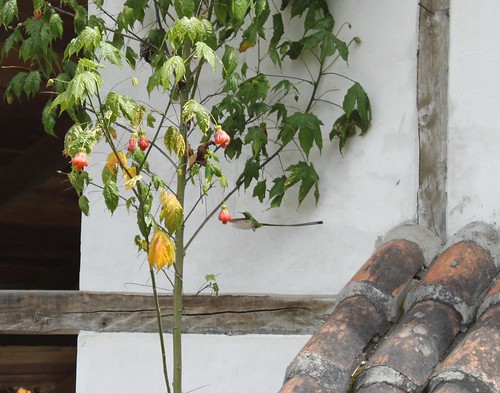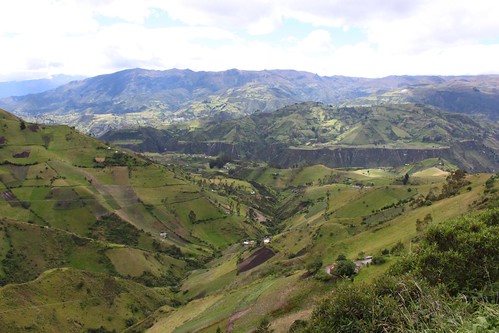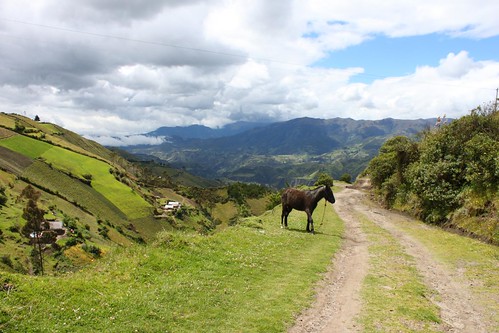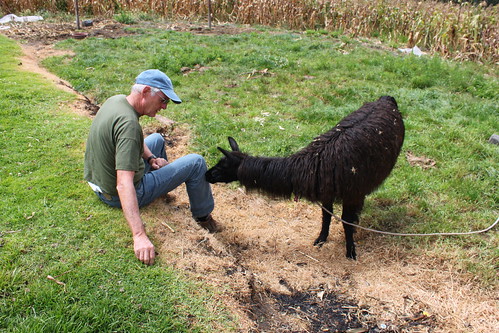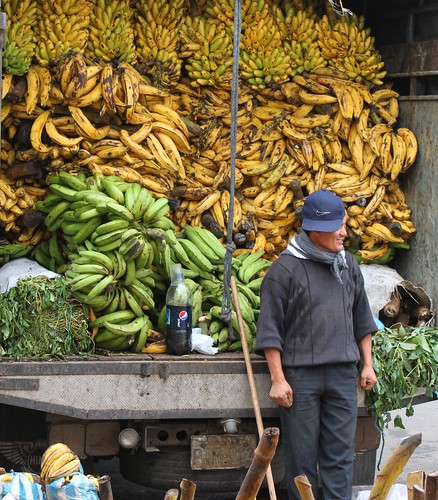The Quilotoa loop is approximately 200 km of paved and gravel road that winds through the spectacular landscape and villages of the Andes in the centre of Ecuador. Getting around the loop is part of the adventure, and while some travellers backpack between villages, Roger and I opted for vehicle transport.
Having just arrived from Baños, we started our trip from the bus station in Latacunga, a city on the Panamerica highway. With our suitcases, we squeezed into the back of the bus, climbing over buckets of produce to take the two remaining seats.
Ecuador buses are fantastic. First of all, there are many bus companies all with handlers who are looking for more passengers. At first intimidating, it proved to very useful to just show up at the station and find the guy yelling “Quito, Quito, Quito” or whichever destination we needed. Secondly, at every stop, vendors jump on selling their wares whether it’s chicken stew, ice cream or instructional DVDs. On this day, a well spoken man was regaling the passengers with the curative properties of a skin lotion that could be purchased for a dolarito (just a dollar).
The other thing I like about Ecuador buses is that you can pretty much get on and off wherever you want. We alighted at km. 49 beside a sign for our hostal and a pig.
We stayed at Posada de Tigua, a working dairy farm that had been in the family for four generations. We were welcomed with a cup of hot canelazo, and shared a delicious lunch with a British couple who were just stopping through with their guide. There wasn’t a ton to do but we managed to while away the afternoon looking at the farm animals and reading.
The next day the owner’s son drove us up to the road to wait for a passing bus. Instead we were picked up by a work crew from Guayaquil on their way to a job in the next town of Zumbahua. From there, we hired a camioneta to take us to Quilotoa, famous for the volcanic crater lake.
Laguna Quilotoa is beautiful from the top, and some people hike around the rim which takes six hours. We made our way down the steep path to the lake, and en route I slipped and landed on a rock. Painful though it was, I had fortunately only bruised a glut muscle and hadn’t broken my tailbone. Still it was enough of an excuse to hire horses for the ride back to the top. We might have done this anyway since hiking uphill at 3900 m is tough going.
After lunch, we had seen enough of Quilotoa but we had already paid for a night at the hotel. We knew that the town was without electricity (and therefore heat and water) because of a lightening strike and used this as a reason to check out of the hotel and spend the money instead on a camioneta to the next hamlet of Chugchilán where we booked into Mama Hilda´s, a charming hostel for two nights.
We had a cabin with a wood stove (appreciated at such altitude) and two hammocks on the porch from which I saw a booted racket-tail hummingbird (I think). Mealtimes at Mama Hilda’s are fun because you eat with the other guests, on our first night with a woman from Montreal now living in Quito and her friend, and a Dutch couple who had hiked from Quilotoa, and the second night, two guys from Oz, two gals from the US, and a German couple who had rented motorcycles and were riding through Ecuador (brrrr).
We did a wonderful hike from Chugchilán that took us along a dirt road up through farmland, across a pánamo (high grasslands) ridge and back down into town. The scenery was spectacular and made all the more interesting with the cows, pigs, horses and dogs.
As I mentioned, transportation can be a challenge on the loop, so rather than take the 3am bus or ride with the kids on the schoolbus at 5:30am, we caught a ride with the bread man at 9am. Roger sat up front, not wanting to lose his Panama hat but I sat in the back of the pick-up for the unobstructed view. At one point, there were 11 people in the back, all villagers in traditional garb holding onto the rails as we went over the bumps.
The truck got us as far as Sigchos where we hung out until the afternoon bus took us to Toacaso, and then a camioneta to our hostel Quinta Colorada. Though rustic, our room had a fireplace, the meals were simple but delicious, and the family who ran the place were muy amable. Also a working farm, we enjoyed conversing with the llama and watching the pigs snuffle their slop.
For a day trip, we took a taxi to the larger town of Saquisilí, and although Wednesday is not a big market day, there was plenty to see. We walked by mountains of potato sacks, crates of tomatoes, truckloads of bananas, and saw papayas the size of watermelons. Lunch was fish and rice for Roger, and tortillas de mais for me with fresh coconut juice and achotillos for dessert.
After one more night in the farmhouse, we headed north via Quito to the big market town of Otavalo.
For more photos, see http://www.flickr.com/photos/sataylor/sets/72157626665229223/
Categories:
